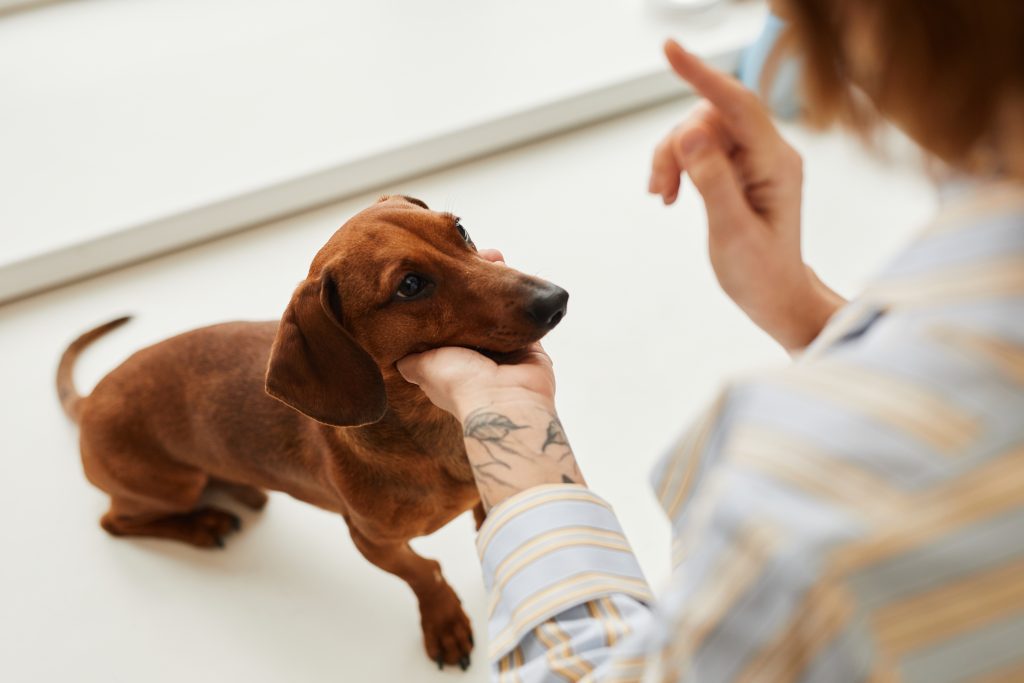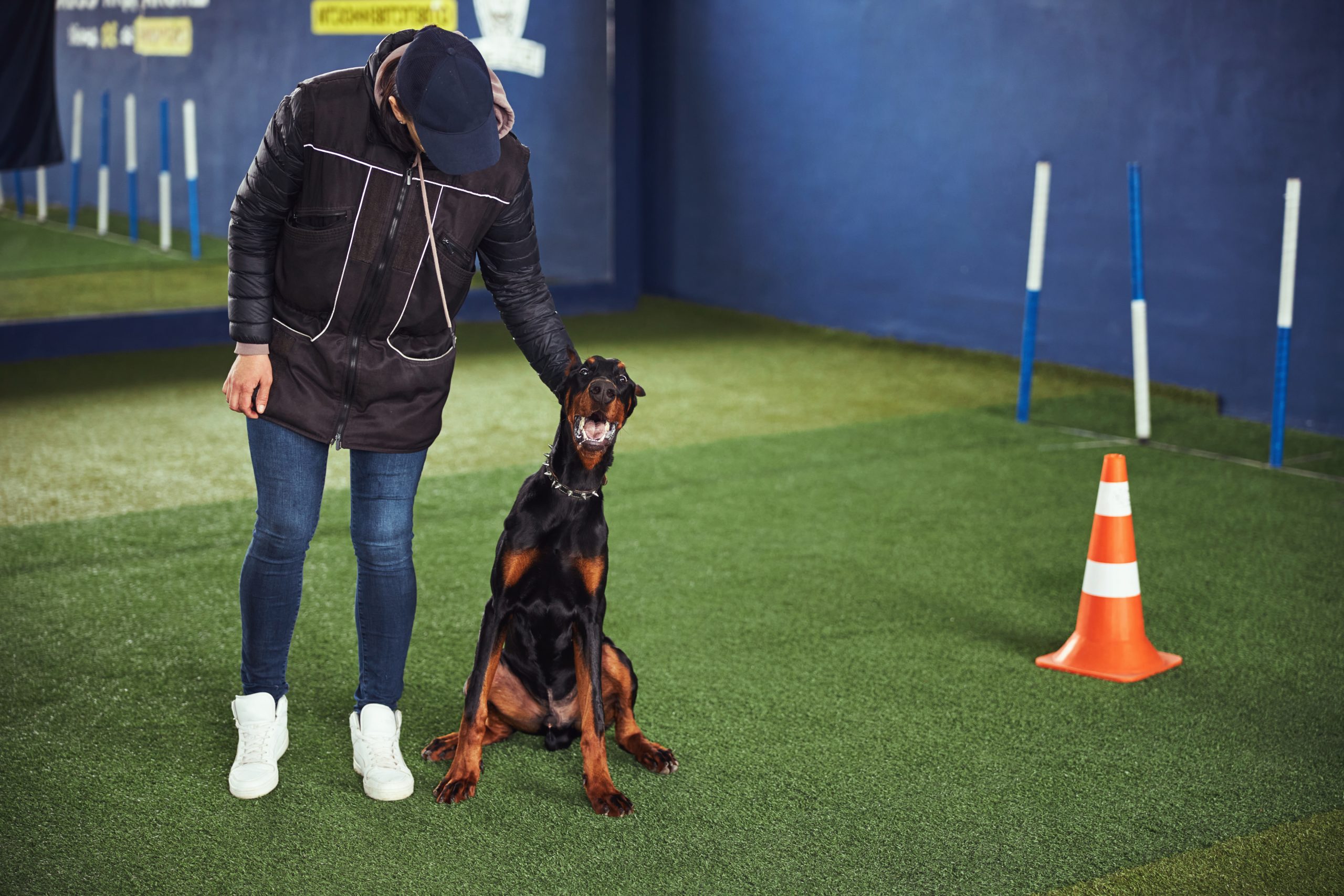Are you a dog owner struggling with obedience training? You’re not alone. Many dog owners find it challenging to train their furry companions. But, did you know that reinforcement plays a crucial role in successful dog obedience training? Reinforcement can be either positive or negative, but positive reinforcement techniques are always preferred. Dog trainers suggest using verbal praise, food rewards, and fun games such as fetch to positively reinforce your dog’s behavior. Apart from promoting good behavior, positive reinforcement also helps to build a strong bond between you and your pooch. Consistency and patience are key when using reinforcement techniques. In this article, we’ll discuss the importance of reinforcement and how it can help you train your dog successfully.

1. Reinforcement
Dog obedience training is crucial for harmonious living between you and your furry friend. Positive reinforcement is an effective technique used by professional dog trainers to teach obedience. It involves rewarding your dog for exhibiting good behavior and is the most popular and effective method of teaching new cues and behaviors.
The idea behind positive reinforcement is to reinforce the association between good behavior and positive outcomes. When you reward your dog for being well-behaved, they’re more likely to repeat the desired behavior in the future. To effectively use positive reinforcement, it’s essential to use words of encouragement, a happy tone, and consistent verbal cues such as “good boy/girl” to let your dog know they’re doing the right thing.
For successful dog obedience training, use high-value treats, toys, or physical rewards like petting or signals. High-value treats are those that your dog loves the most, such as bacon, cheese, chicken, or liver. You can also use dog toys or affectionate signals, such as scratching their belly or patting their head to reinforce positive behavior.
2. Keep It Short and Simple
Professional dog trainers recommend keeping training sessions short and simple to ensure that both you and your furry friend are engaged, focused, and motivated. A good rule of thumb is to limit your training sessions to no more than 10-15 minutes at a time, several times a day. This way, you can maintain your patience and keep your dog’s attention throughout the session.
Shorter sessions can help prevent frustration and fatigue, which can negatively impact your dog’s willingness to learn and his ability to retain lessons. If you do find yourself getting frustrated during a session, it’s best to take a break and try again later when you both are feeling more relaxed.
Repetition is also key to ensure that your pup can generalize the command and apply it in different scenarios and locations. By introducing small but frequent training sessions, you’ll be able to maintain focus and attention, making it easier for your dog to retain the lessons learned and transfer them into other contexts.
One of the benefits of integrating several short training sessions into your daily routine is the ability to establish a consistent and positive training routine. Short training sessions can be easily squeezed into your daily schedule, whether it’s before or after work, during a walk, or while your pup is playing fetch. Consistent training can help create a predictable and reassuring environment for your dog, leading to a stronger bond between the two of you.
3. Repetition
Repetition is a crucial component of successful dog obedience training. Repeating commands and exercises is essential to solidify learned behaviors and improve communication between you and your furry friend.
When you repeat a command, it helps your dog understand what’s expected of them and how to respond consistently. This repetition helps your dog remember what they’ve learned, and it reinforces good behaviors. It’s essential to practice commands in different locations and scenarios to help your dog transfer their learned behaviors to real-life situations.
Consistency is key when it comes to repetition. Regular training sessions create a routine that your dog becomes familiar with and can expect. Aim to set small and achievable training goals that build on each other over time. By breaking down training into smaller components, you can focus on one behavior at a time, making it easier for your dog to learn and retain new behaviors.
It’s also important to practice regularly, preferably every day, with multiple short training sessions to keep your dog’s attention and focus. Using positive reinforcements such as high-value treats and verbal praise helps to motivate your dog during the training process.
4. Patience
Successfully training a dog requires more than just repetition and positive reinforcement. It also requires patience. Behavior change takes time, and it’s important to recognize small improvements along the way. It’s easy to become frustrated when your dog doesn’t seem to be responding as quickly as you hoped, but it’s essential to remain patient and keep pushing forward.
One way to stay patient during the training process is to break behaviors into smaller steps. It’s easier for your dog to learn new behaviors when they are presented in manageable pieces. Keep your expectations realistic and recognize that your dog won’t learn everything overnight. Keeping a log of your dog’s behavior can also be helpful. It allows you to track progress and identify areas that need more work.
If you’re dealing with complex behavior issues, it’s important to stay patient and keep your expectations in check. Some behaviors may take weeks or even months to correct fully. It’s okay to feel frustrated at times, but it’s critical to stay focused on the small accomplishments along the way. Celebrate when your dog makes progress, even if it seems small to you.
5. Be Consistent
Consistency is crucial for successful dog obedience training. Establish clear rules and maintain a consistent approach throughout the process. It’s essential to establish clear rules and guidelines for your dog and to maintain a consistent approach throughout the training process. This means that everyone in your household should be on the same page when it comes to training your dog, using consistent words, intonation, and avoiding making exceptions.
Inconsistent training can have negative impacts on your dog’s behavior. If your dog receives mixed signals, it can become confused and may not respond well to your commands. For example, if you allow your dog to jump on you when you come home, but not when guests arrive, your dog may not understand why it’s okay to jump on you and not others.
To maintain consistency in your dog obedience training, it’s important to establish a regular routine. Set aside a specific time for training sessions each day and stick to it. This not only helps your dog develop a routine but also helps you stay committed to the training process.

Conclusion
In conclusion, successful dog obedience training relies on consistent repetition, patience, and positive reinforcement methods. Training routines should be established and maintained to create a sense of structure for your furry friend. It’s crucial to find the right rewards for your dog and avoid negative punishment. By utilizing these techniques, you can foster a strong and lasting bond with your pet. Keep exploring different training methods and never stop learning to ensure your dog’s happiness and obedience. Remember, with the right approach and mindset, any dog can be trained to be a well-behaved and loyal companion.









